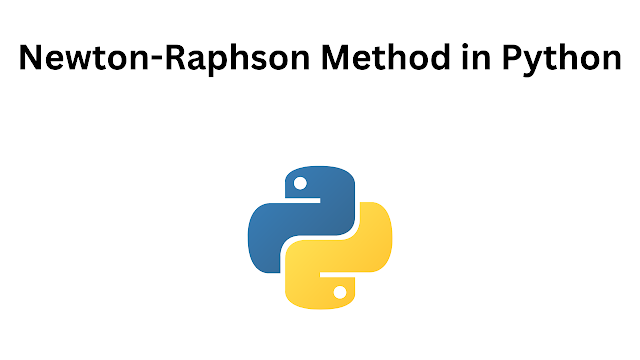Newton-Raphson Method in Python
Newton's method, also known as the Newton-Raphson method, is a powerful numerical technique used for finding the roots of a real-valued function. Named after Sir Isaac Newton and Joseph Raphson, this method is based on the idea of linear approximation. In this blog post, we'll explore the Newton-Raphson method, its mathematical formulation, and how it can be implemented in Python.
Understanding the Newton-Raphson Method
Imagine you have a function and you want to find the value of such that . The Newton-Raphson method starts with an initial guess and iteratively refines this guess to get closer to the root. It uses the tangent line to the graph of at the point to predict a better guess for the root.
Mathematical Formulation
Given a function , the Newton-Raphson method iteratively updates the current guess using the formula:
Where:
- is the derivative of at the point .
This process is repeated until the difference between consecutive approximations is within a specified tolerance level.
Implementing the Newton-Raphson Method in Python
Code :
def newton_raphson(func, derivative, initial_guess, tol=1e-6, max_iter=100):
"""
Find the root of a function using the Newton-Raphson method.
Args:
- func (callable): The function for which to find the root.
- derivative (callable): The derivative of the function.
- initial_guess (float): Initial guess for the root.
- tol (float): Tolerance for the root approximation (default: 1e-6).
- max_iter (int): Maximum number of iterations (default: 100).
Returns:
- float: Approximation of the root.
"""
x = initial_guess
for _ in range(max_iter):
fx = func(x)
if abs(fx) < tol:
return x
x -= fx / derivative(x)
raise ValueError("Newton-Raphson method did not converge")
# Example usage
def f(x):
return x**2 - 4
def df(x):
return 2*x
root = newton_raphson(f, df, 3)
print("Approximate root:", root)
.png)



0 Comments
if you are not getting it then ask i am glad to help